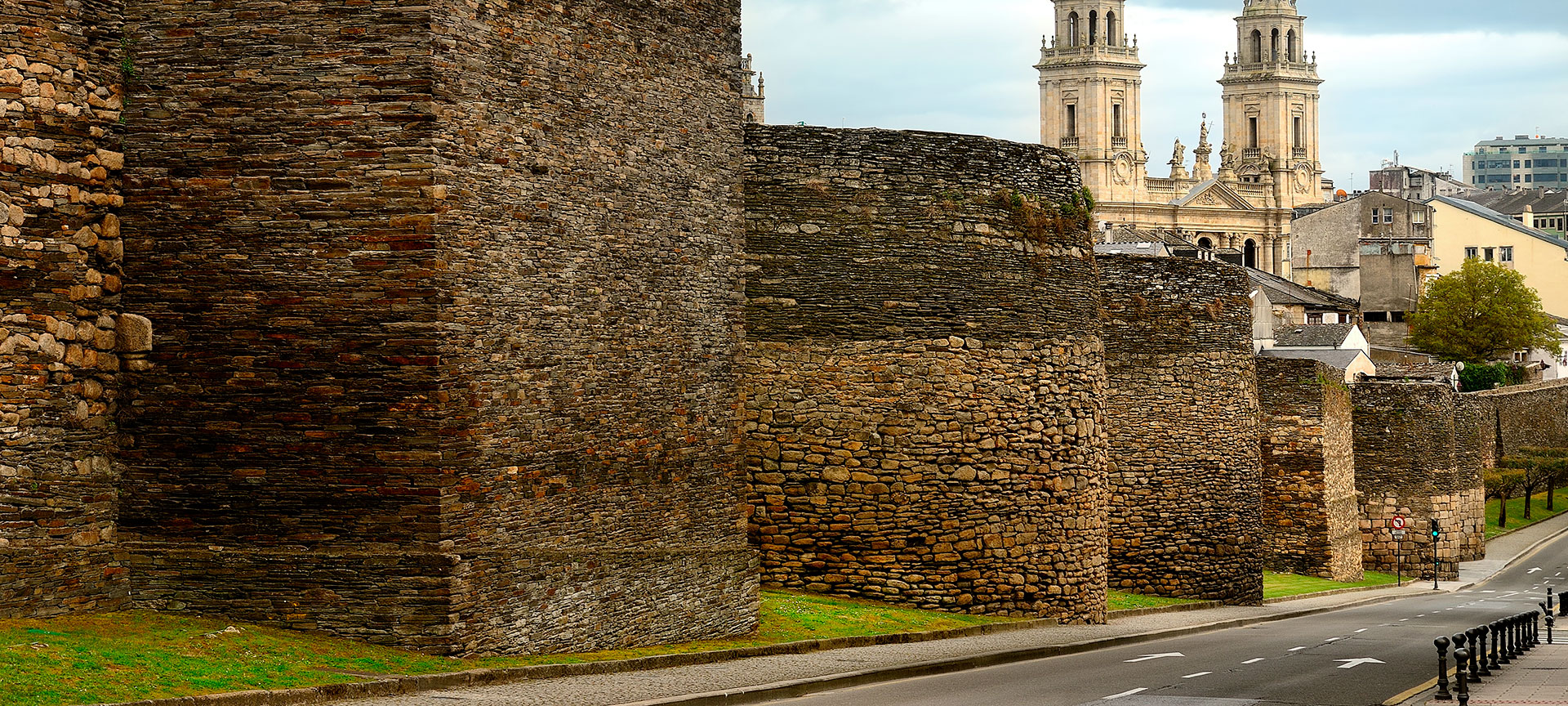
Lugo city walls
Seventeen centuries of city walls
The city wall was part of a defensive complex comprising a moat, wall and an intervallum. It is the only Roman wall anywhere in the three continents that saw Roman domination, to maintain its entire perimeter intact.
The Roman city wall in Lugo dates from the end of the 3rd century. It was built to defend the Roman city of Lucus Augusti against the barbarian threat, The city wall was part of a defensive complex comprising a moat, wall and an intervallum. It encloses an area of some 34.4 hectares, and has a perimeter of approximately 2,120 metres. Its average thickness is 4.2 metres and its height ranges from 8 to 12 metres. It has a rectangular floor plan and the rationale for its design is still unknown, given that it left some important residential areas unprotected while in other sections it included areas of empty ground within the walls. It is built of mortar made from earth, loose stones and pebbles, cemented with water. It currently has 71 sections (60 circular and 11 quadrangular) with two-storey towers. Access to the walled area was via ten gates, five of which were opened from 1853 onwards, on account of urban growth. UNESCO considers the Roman walls of Lugo to be 'the finest surviving example of late Roman military fortifications'.
Lugo city walls
City Wall Interpretation Centre
Praza do Campo, 11
27001 Lugo (Galicia)
Activa JS
Travel plans for inspiring you
Next tours









